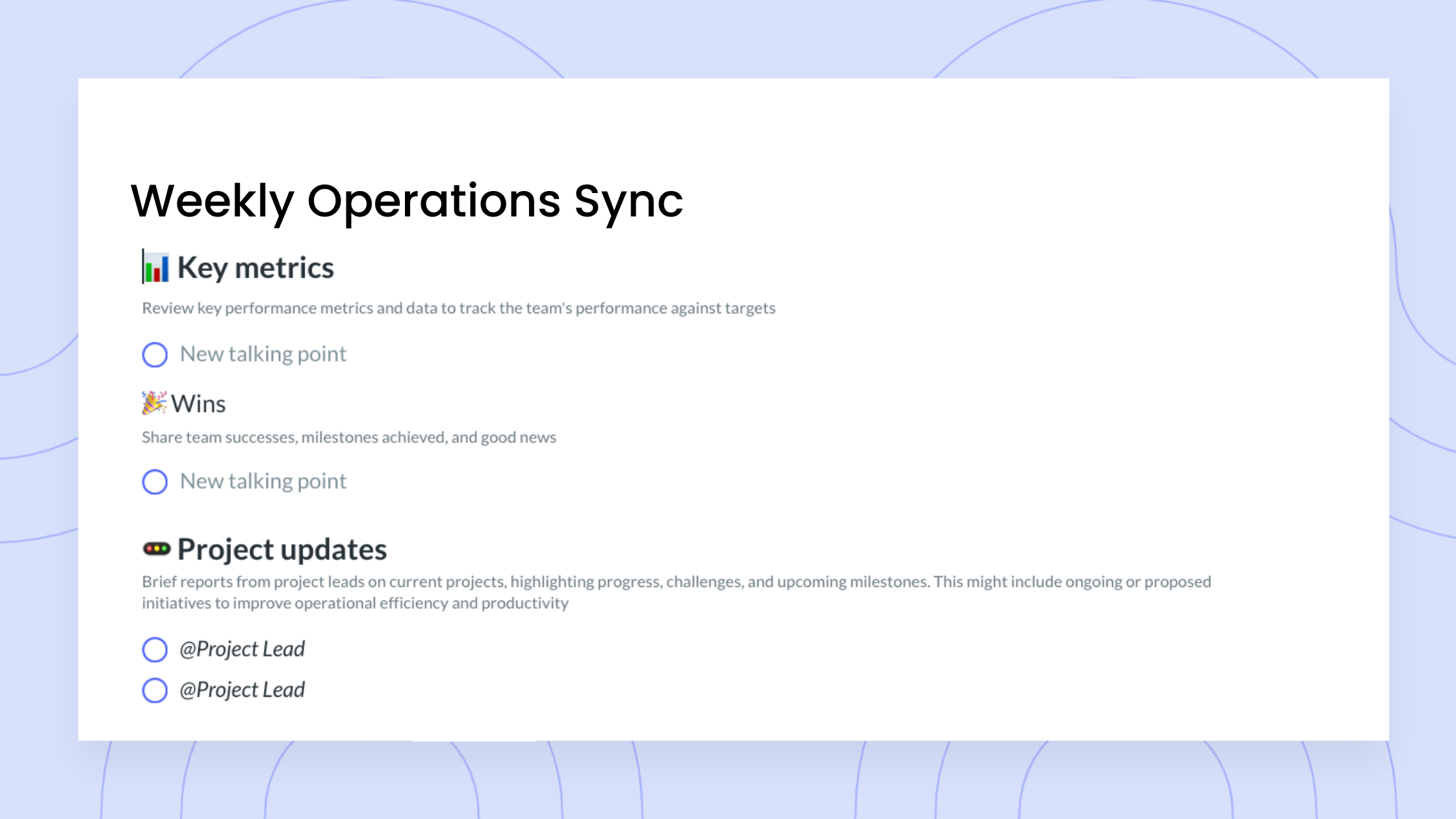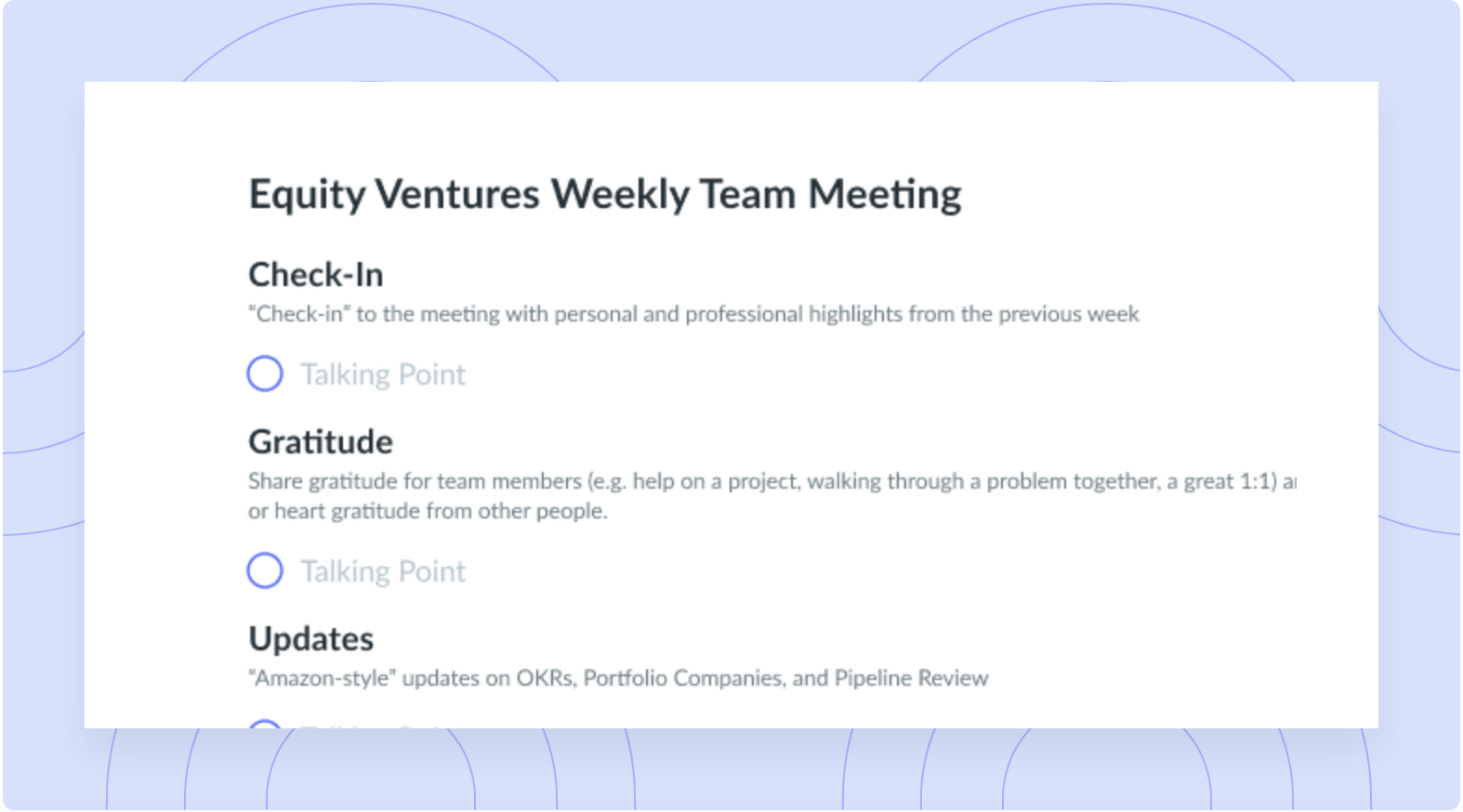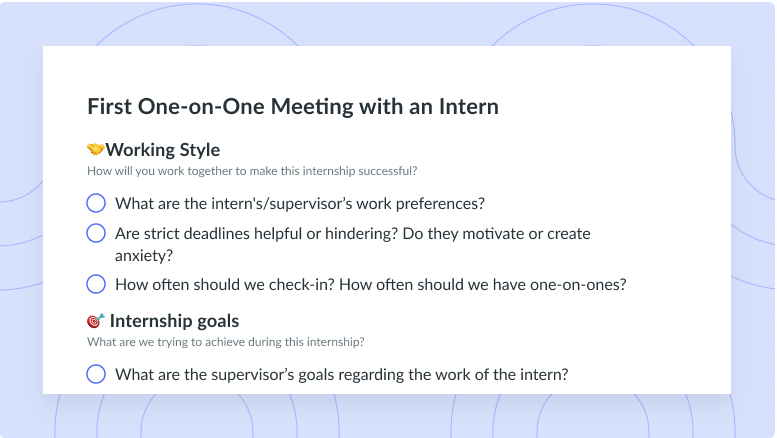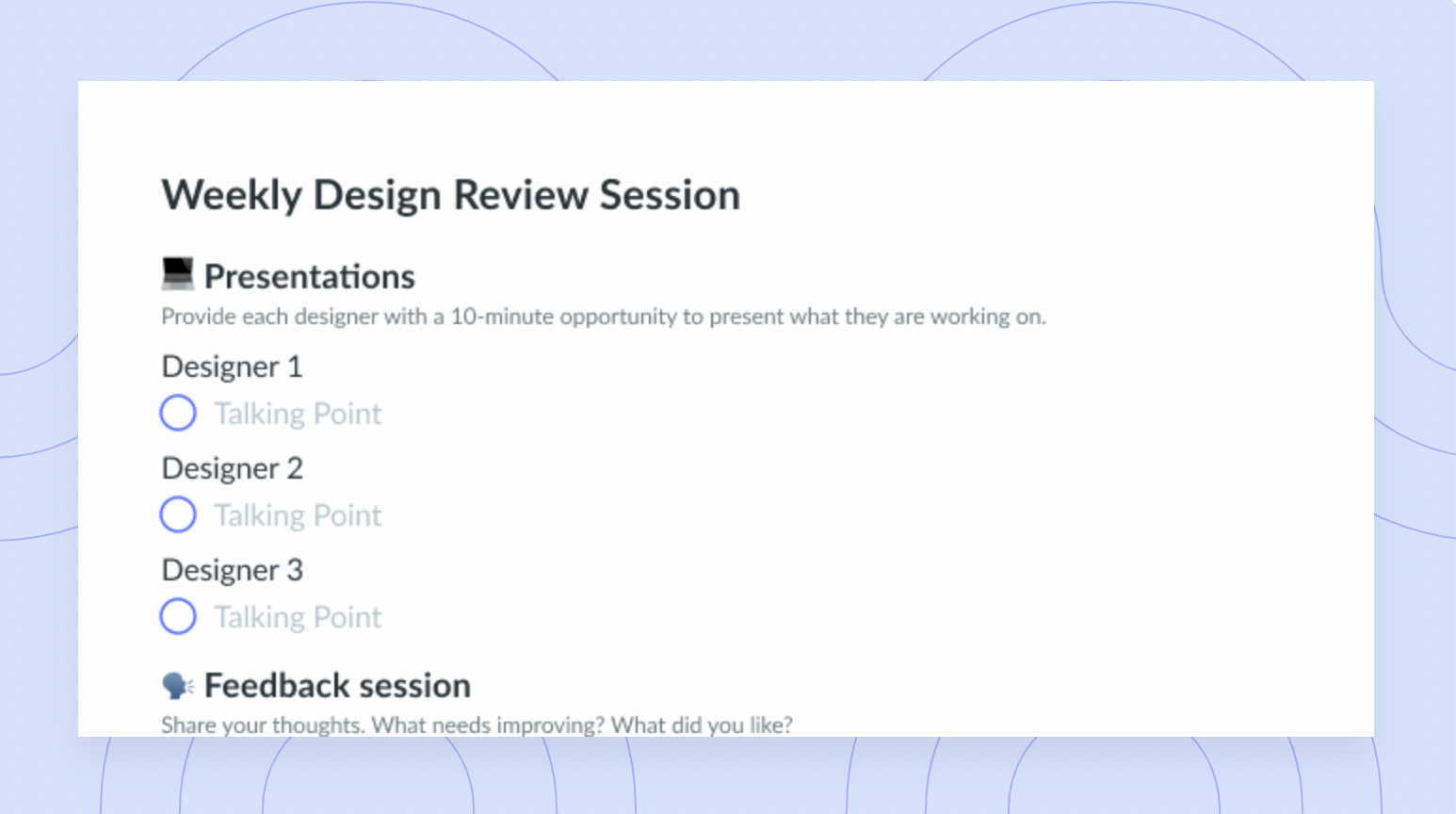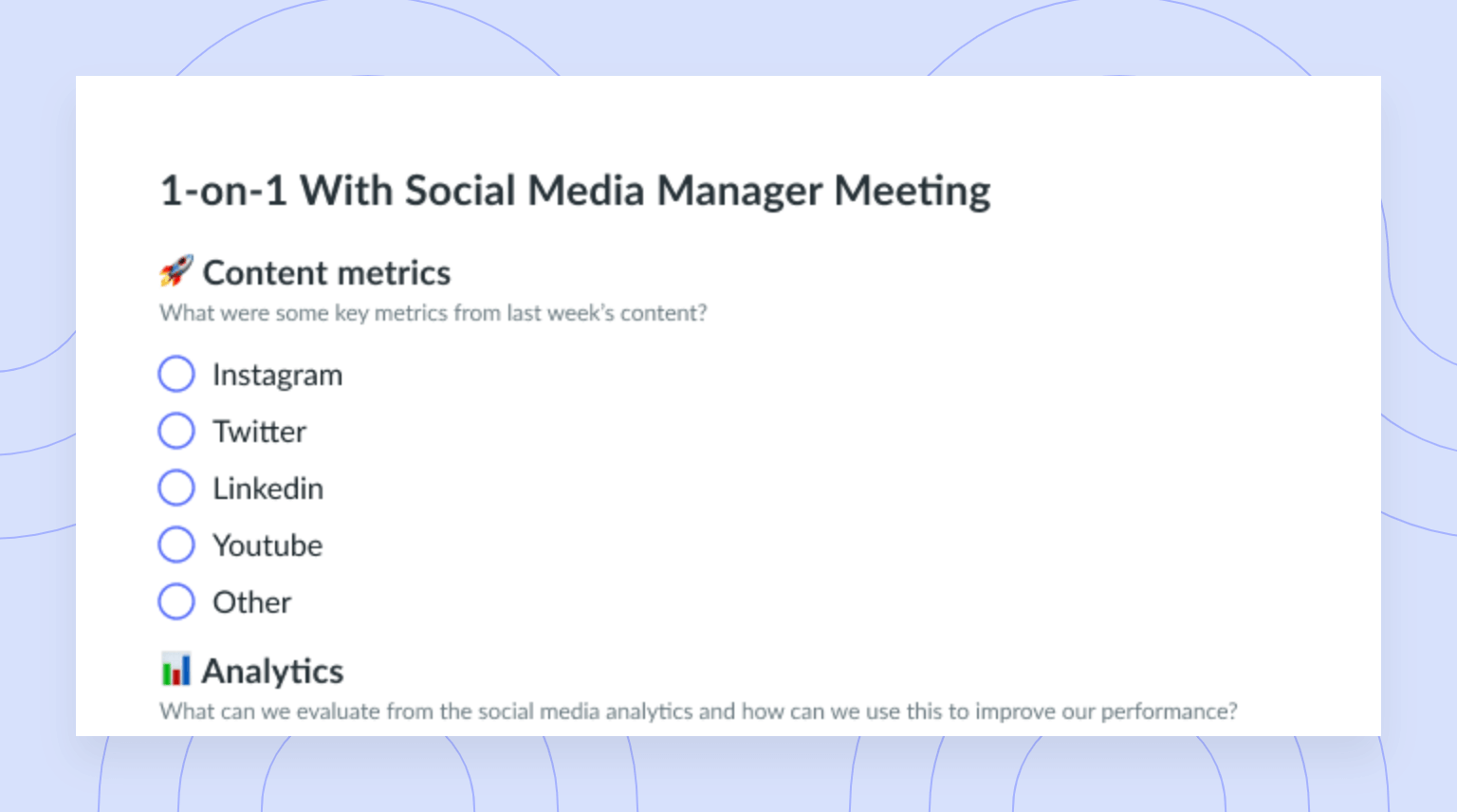Effective Workplace Accommodations for Anxiety
Don’t let your team go through anxiety in silence. Read on for a few tips on how to help them better manage it in the workplace.
Anxiety isn’t exactly uncommon, especially in the workplace. When a deadline is coming up or there’s a major change in your team’s personal lives, it’s no surprise they’d be a little on edge. However, anxiety disorders are a little different. Anyone who’s dealing with one might experience excessive and persistent anxiety at the mere idea of everyday situations (talking to other people, for example).
Workplace accommodations for anxiety disorders and other mental health conditions can help your team and keep your organization at peak performance. Here’s how to build them into your workplace.
- Is anxiety considered a disability in the workplace?
- Ways to accommodate anxiety in the workplace
- Workplace modifications for anxiety and depression
- Workplace management accommodation for anxiety and depression
- Overcoming workplace obstacles with anxiety and depression
Is anxiety considered a disability in the workplace?
Short answer: Yes. The more complicated answer is that it depends on the severity. Stress and anxiety come with the territory in any work environment, so most organizations might not think to set up accommodations for it. Typically, when anxiety starts to seriously limit someone’s job performance, it’s considered a medical condition with federal protections under the Americans with Disabilities Act (ADA).

Managing a team?
Take control of your team meetings by having collaborative meeting notes and encouraging accountability with action items. Try a tool like Fellow!

Ways to accommodate anxiety in the workplace
While some can conquer everyday anxiety with a bit of relaxation and maybe a nice cup of tea, people with disabilities need more focused care. Below are just a few job accommodations you can use to help your team manage psychiatric disabilities in the workplace.
- Flexible location and scheduling
- Plenty of breaks
- Great communication
- On-site job coaches
- Freely available snacks and drinks
1Flexible location and scheduling
Comfort has a lot to do with managing anxiety, and working from home can keep people calm and focused because they’re in their own space. Similarly, allowing more flexible schedules – adjusting start and end times, offering hybrid work schedules – can do wonders for stress management.
2Plenty of breaks
Most people deal with anxiety on the job, and they usually find ways to let out the pressure during breaks. It’s often the same for someone with a disorder, but since their anxieties are so intense, a 15- or 30-minute break might not cut it. Instead, you should block out additional time on their schedule for them to step away from their desk.
3Great communication
Effective communication is key to any organization’s productivity and workflow. But even with great communication systems in place, it’s possible for important information to get lost in transit.
While needing to guess the instructions for your task is usually anxiety-inducing, it can be outright debilitating for someone with a disorder. You should use their preferred communication methods to clearly explain each task.
4On-site job coaches
A job coach can help a team member with a disability adapt to their responsibilities. This person will teach the team member how to best manage their anxiety while doing their work as efficiently and accurately as possible.
5Freely available snacks and drinks
Reaching for a snack or drink when stressed is a pretty common coping mechanism. Letting team members keep snacks and drinks at their desks (as long as they clean up after themselves) can help them manage their anxiety.
Workplace modifications for anxiety and depression
Accommodating long-term disabilities like anxiety and depression doesn’t have to stop with policy changes. You can also make some physical changes to your workplace to accommodate team members’ conditions.
- Reducing workplace noise
- Soundproofing or visual barriers
- More natural lighting
- Music and headphones to block out distractions
1Reducing workplace noise
Imagine working at a desk for several years with constant low-level anxiety. Now imagine the persistent sound of heavy machinery or slamming doors constantly interrupting what little peace you’re able to find. Moving workspaces away from noisy areas can help team members find calm during a hectic work schedule.
2Soundproofing or visual barriers
Just like many people are most comfortable in their homes, having somewhere to retreat to during work can help manage anxiety. Cubicles are becoming less common in modern workspaces, but your team members can still build their own hideaways with room dividers and partitions.
3More natural lighting
Natural lighting (or something that comes close, like artificial full-spectrum lighting) can have more positive effects on your team’s mood than typical office lighting. A few open curtains or extra windows can be just what someone needs to focus on their job duties.
4Music and headphones to block out distractions
Some managers might worry about team members who block out the world with their headphones – how can they get these team members’ attention? But this perspective is due for a big-time change. Often, music in headphones keeps team members productive – it blocks out anxiety-inducers and helps them focus on their work. What manager wouldn’t want that?
Workplace management accommodation for anxiety and depression
You’ve changed some policies and made some great additions to your workspace –now, it’s time to adjust how you handle mental health. After all, as a manager, your actions will often directly influence your team’s morale and engagement.
To be clear, we’re not saying that you are causing anxiety. But you can have a more direct hand in helping a team member overcome it. Here’s how.
- Flexible, supportive management
- All kinds of communication channels
- Regularly scheduled meetings
- Dealing with problems before they arise
- Written work agreements
- Remind your team they have the right to accommodations
- Training your team
1Flexible, supportive management
Your team members won’t have much luck managing their anxiety if you’re not willing to humor their coping mechanisms. Being willing to support your team through their disabilities with flexibility and understanding can keep them engaged and productive.
2All kinds of communication channels
If your team only has one way to contact you, they might end up waiting in line to get help. While you’re most likely a busy person yourself, staying a quick call away can keep you up-to-date on your team’s health and major life activities.
3Regularly scheduled meetings
Team meetings are a great opportunity to discuss any workplace issues. They’re where you can most reliably figure out what’s causing anxiety for your team and how this is affecting productivity. Or you can hold one-on-one meetings with your team members who struggle with anxiety to work super closely with them on accommodations.
With Fellow, you can host productive team meetings and 1:1s with a collaborative meeting agenda that everyone can contribute to.

4Dealing with problems before they arise
Keeping the right resources on hand can cut problems off at the pass. This could mean a Slack channel where your team members can kindly but thoroughly vent or seek help. It can also mean educating yourself. Even reading this article can help prepare you for dealing with a team member’s mental health condition.
5Written work agreements
A work agreement is an official statement between you and a team member that you both sign. It tells your team members all about their right to accommodations for their mental health. It also outlines their role on your team and what could happen if poor job performance continues with all the accommodations in place.
6Remind your team they have the right to accommodations
Not everyone considers their anxiety or depression a disability in the first place, so they might not seek out resources to manage them. Making your team aware of accommodation laws and what falls under them is a great first step in helping them, well…ask for help.
7Training your team
Everyone, especially people with anxiety or depression, should start in their roles 100% knowing what’s expected of them. Left in the dark for too long, they could start making mistakes, and messing up can send their anxiety skyrocketing.
Overcoming workplace obstacles with anxiety and depression
Below are a few examples of the problems workplace anxiety and depression can cause and some ways to help team members overcome them.
1Attendance
If there was a place that caused you constant stress, wouldn’t you want to avoid it? Team members with anxiety may try to stay away from work so that they don’t have to struggle with their anxiety. One of the best ways to help with this is giving them time off to:
- Schedule appointments with their mental health professional.
- Seek more thorough treatment when needed.
- Take a break from the anxieties of the workspace.
2Tardiness
When someone in your team is already getting help for their anxiety disorder, they might be prescribed medication that makes them drowsy. That means it’s probably harder for them to get up and out in the early morning, leading to a flood of tardy slips. Instead of writing them up, first, try:
- Modifying their work schedule to account for their drowsiness.
- Giving them more frequent breaks for quick power naps.
- Letting them come in earlier or stay later to finish their work.
3Concentration
Focus doesn’t come as easy when you’re dealing with anxiety or depression, and normal workplace distractions certainly don’t help get it back. Some things you can do to help team members recover their focus include:
- Moving their workstations to less distracting areas.
- Limiting interruptions from coworkers.
- Letting your team members listen to their music on the job.
4Memory and organization
Mental health conditions can also leave a team member struggling to remember important instructions or feeling unmotivated to organize their office desk. There are several ways you can help with this issue, including:
- Giving feedback in writing for your team members’ work.
- Breaking down bigger projects into more manageable parts.
- Making meeting notes available for your whole team to see and share.
Help your team conquer anxiety
Holding regular team meetings and one-on-one to see what’s causing anxiety is one of the best ways to show support. With Fellow, you can plan meeting agendas, hold meetings, and follow through on your findings with professional meeting tools. Through real-time meeting notes and feedback, team members with psychiatric disabilities can find success – and relief – in the workplace.

![10 Signs You’re In a Toxic Workplace [and How to Handle It]](https://fellow.app/wp-content/uploads/2022/01/toxic-culture.jpg)








